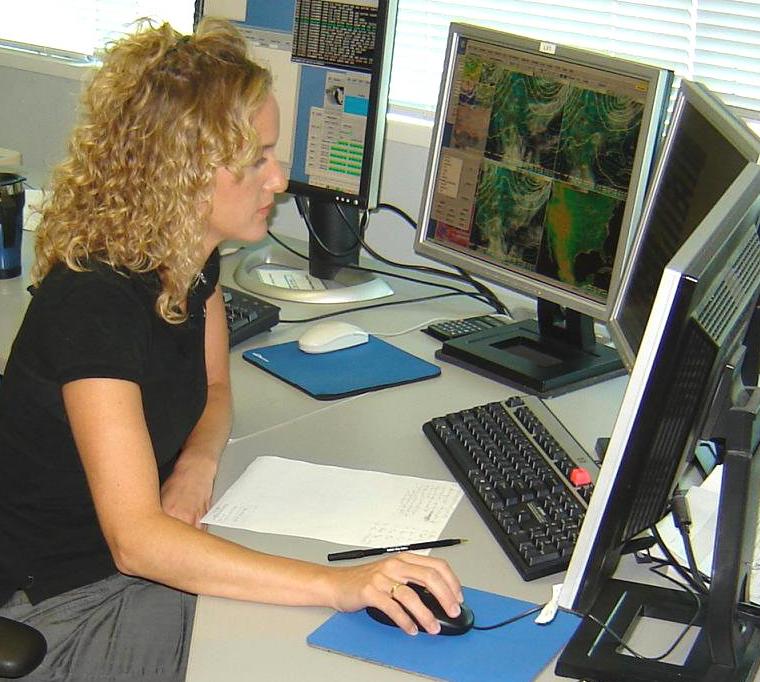Virtual Tour Navigation: Go Back | Go Forward | Tour Directory
Page: 1 2 3 4 5 6 7 8 9 10 11 12 13 14 15 16 17 18
Weather forecasts are made by collecting data about the current state of the atmosphere and using an understanding of atmospheric processes to predict how the atmosphere will evolve. The chaotic nature of the atmosphere along with the incomplete understanding of atmospheric processes is what makes forecasting difficult.
 Before any forecast can be made, a meteorologist must first understand what the current weather conditions are and what is producing them. This is done by examining a large quantity of observation data including surface observations, satellite imagery, radar data, radiosonde data, upper-air data, wind profilers, aircraft observations, river gauges, and simply looking outside.
Before any forecast can be made, a meteorologist must first understand what the current weather conditions are and what is producing them. This is done by examining a large quantity of observation data including surface observations, satellite imagery, radar data, radiosonde data, upper-air data, wind profilers, aircraft observations, river gauges, and simply looking outside.
Forecasters at our office complete a hand analysis of regional surface analysis at least three times per day and an analysis of upper-air weather maps as needed to get an idea of the state of the atmosphere. When all of this data review and analysis is completed over time, meteorologists are provided a means to track the evolution of fronts, jets, cyclones and anticyclones and use this information for pattern recognition.